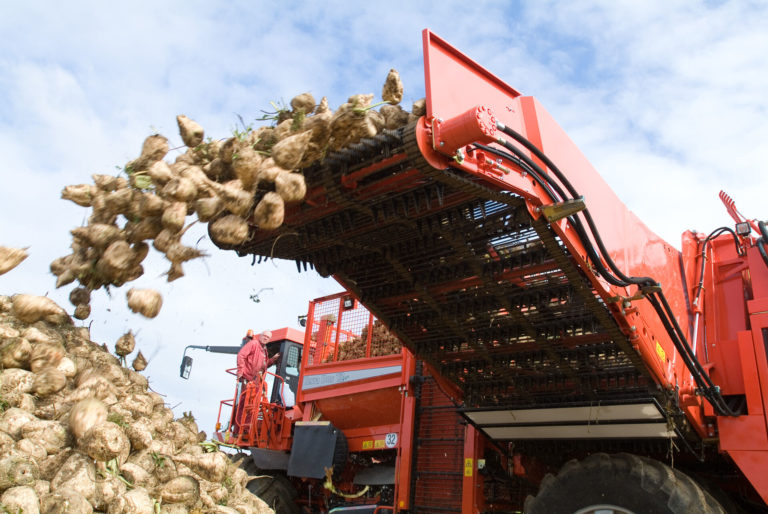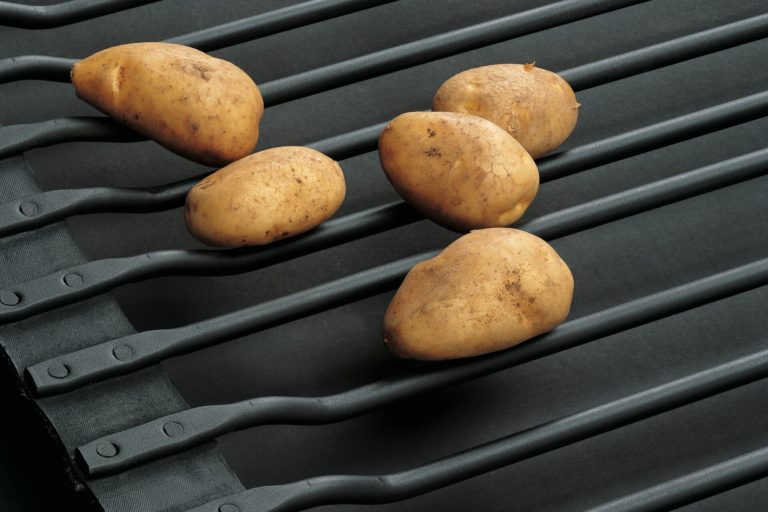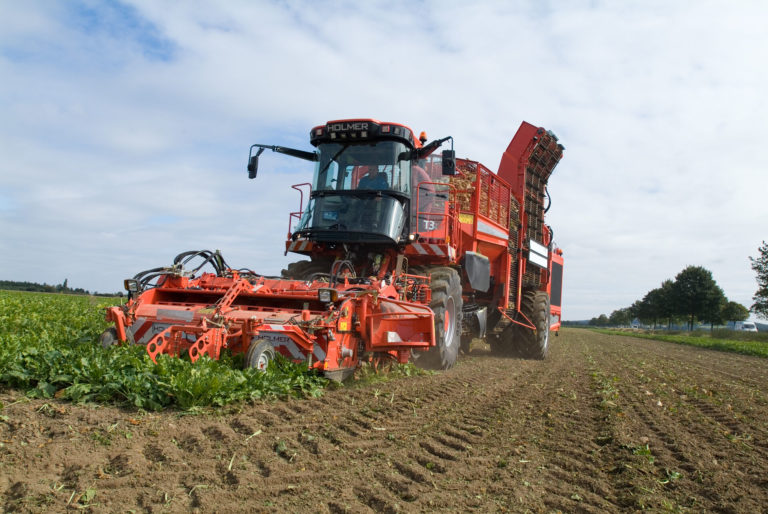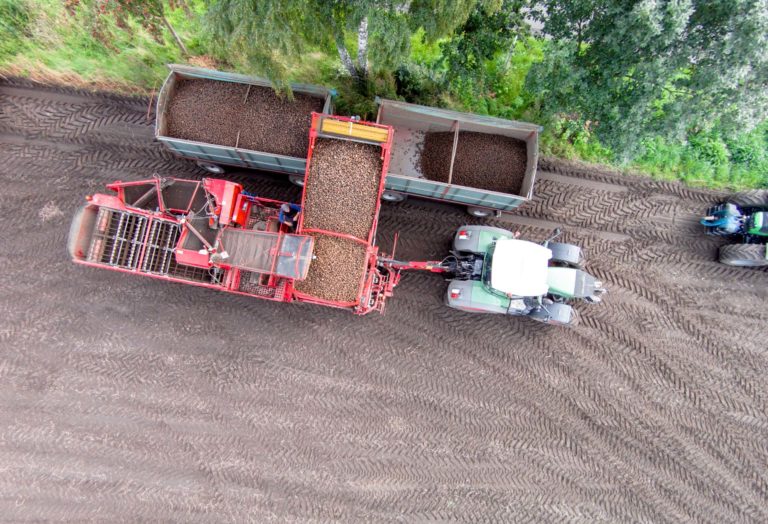HARVESTER?
EASY FOR US!
Modern full-harvest harvesting harvesters in the beet and potato harvest are highly complex agricultural machines that perform the entire harvesting process fully automatically. The desire to increase efficiency has led to the fact that both the machines and the storage bunkers have become larger and larger, allowing more and more rows to be harvested simultaneously. A trailed potato harvester of the latest generation has a total weight of over ten tons. When fully filled, a modern beet harvester can even reach a total weight of over 60 tonnes. This weight creates a dangerous conflict of objectives in the development of harvesters. How can weight be reduced without causing a reduction in performance and volume?


In product development, designers of new harvesting prototypes are working to solve this challenge. They know that customers want to reduce soil compaction. One solution is to use wider tyres with a larger contact area. The disadvantage is that this does not result in a reduction in weight. If a manufacturer of agricultural machinery wants to reduce the weight of his harvesters, the use of elastomers and plastics is essential. In addition to weight reduction, plastics also offer advantages in terms of durability and abrasion resistance. Elastomers, on the other hand, score points with their elasticity and good sealing and damping properties.
In cooperation with the leading manufacturers of harvesters, we often carry out joint part developments for harvester prototypes. Thanks to our materials expertise in the field of rubber and plastics and our many years of experience, challenges in the production of assemblies and components are overcome more quickly. Our own test benches for the preliminary inspection of materials and assemblies reduce the time required for field tests. In this way, we actively support designers in bringing innovative prototypes to series production readiness more quickly.
Up to 200 support rollers with a weight of 600 kilograms are installed in the screen belt systems for harvesters. The JÄGER Group has taken up the challenge of redesigning the component, which previously consisted of metal. After extensive material tests, glass-fiber reinforced plastic was selected in combination with a tread made of a rubber compound. Only the ball bearing is still made of metal today. With this choice of material we have achieved a weight reduction to only 550 grams per idler – the harvester thus weighs half a ton less.
No consumer would buy potatoes whose skin is damaged. Our crop conveyor belts with rubberized carriers in potato harvesters are therefore very important. The steel drivers used so far are too hard and can cause pressure marks and scrapes on the crops. The JÄGER Group offers individually adapted elastomer compounds for drivers and conveyor belts. In addition to a weight reduction, this also protects the potatoes.
Together with the manufacturers of harvesters, we are working on the new development of components to map the entire life cycle of the product. In addition to product properties such as abrasion resistance and reliability, this also includes the availability of spare parts. Replacement time is an important criterion, especially during harvesting, and the time and effort required for assembly must also be taken into account. Too long assembly times result in expensive machine downtimes.
We see a great opportunity in every development partnership for the construction of a new prototype for harvesters: We bring in new ideas and prove our own material competence in the development project! The control of material properties with the help of the appropriate mixture is a success factor in the development of parts. Every assembly whose weight can be reduced and which is superior to the materials used so far in terms of durability helps to overcome the conflict of objectives.


- Germany -
Please select a valid form
- USA -
Please select a valid form
Arnold Jäger Holding GmbH
Lohweg 1
30559 Hannover (Germany)
Tel. +49 511 – 53580
Fax +49 511 – 553394
Management board:
Dipl.-Kfm. Marius Jäger
Dipl.-Ing Sebastian Jäger
Registercourt Hannover HRB 59983
DE 813 341 233
Arnold Jäger Holding GmbH
Artemis Kautschuk- und Kunststoff-Technik GmbH
Artemis PC Pump Systems Ltd.
Transportbandenfabriek EA Broekema B.V.
Broekema Beltway USA, Inc.
Jaeger Envirotech India Private Limited
Jäger Gummi und Kunststoff GmbH
Jaeger Maritime Solutions GmbH
Jaeger Polska Sp. z o.o.
Jaeger Rubber & Plastics (Shenzhen) Ltd.
Jäger Umwelt-Technik GmbH
Jaeger-Unitek Sealing Solutions, Inc.
Spira Systems, Ltd.
Windgassen GmbH